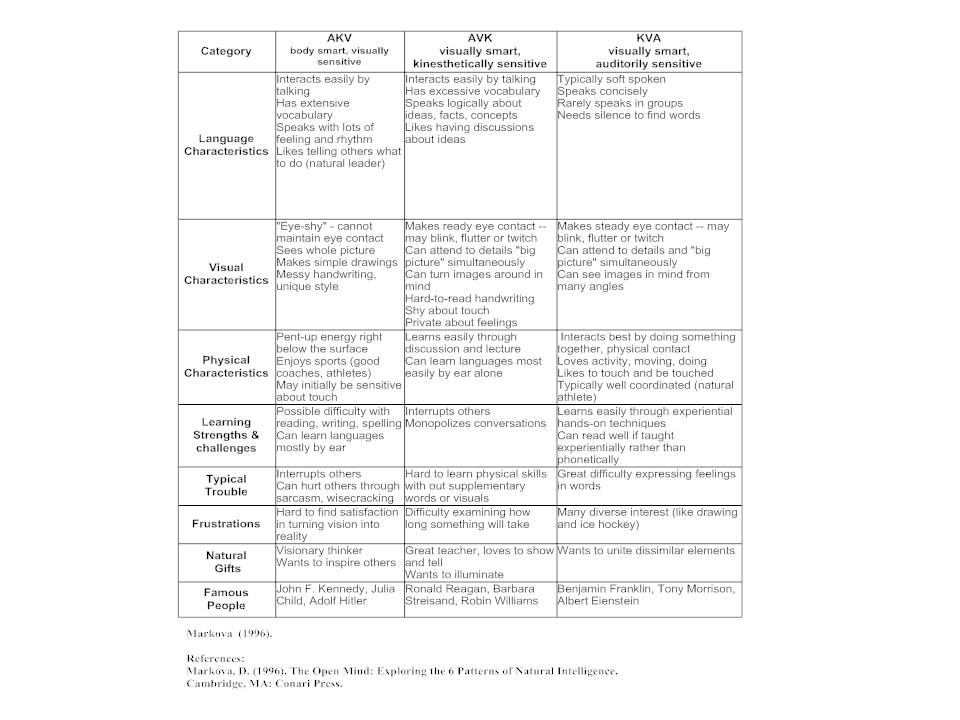Exploration and discussion concerning improvement and innovation in today's organizations.
In today’s highly competitive and global economy both 'improvement' and 'innovation' are essential for businesses to remain competitive. Generally, improvement aims for high and sustainable performance in existing business areas through continual and incremental gains, while innovation aims for breakthrough resulting in stepwise gains. In the past they were seen as mutually dependent and approached through the various 'silo' functional areas of organizations. Through benchmarking of best practices in use today there is strong evidence to support integrating improvement and innovation to achieve a coherent and powerful approach to sustainable business practices. Look for upcoming post to explore the dilemmas often faced in pursuing improvement and innovation concurrently and to sharing the benefits of successfully integrating them together.
Learning Styles and Innovation
- Font size: Larger Smaller
- Hits: 19429
- 3 Comments
- Subscribe to this entry
- Bookmark
Working with an innovation team on a project, I find it is better to ask them what their rules of interaction and engagement will be. This works much better than me imposing some arbitrary set of rules. When working in the team environment where certification is a desired outcome, one of the requirements is a statement about the rules of engagement for the project. This approach allows the project team to accommodate all learning styles represented in the group. The decisions they make may not be based on actual knowledge of participant’s learning styles; however, decisions or learning styles will emerge in the ground rules the team establishes. By allowing the team to grope to identify their rules and levels of engagement early in the project launch, they begin to establish a set of rules for working together.
How do I work? I grope
—Albert Einstein
Early in my career I noticed many consultants and trainers would hoard information in workshops and training sessions so as to protect intellectual property, and gain additional work. This created a process of doling out bits and pieces of intellectual property and knowledge content a little at a time, year over year. This was not the way I wanted to engage with colleagues and clients. I was fortunate to come across the concepts of learning styles and natural intelligences as taught by Dr. Donna Markova. Since then, I always engage teams using the six styles Markova presents. (Markova, D. 1996).
“It takes a golden ear to be empty enough of itself to hear clearly. “
—M.C. Richards (KVA). Centering
Markova, D. (1996-11-15).
When engaging with others in innovation projects I adapt Markova’s patterns of natural intelligence by asking participants to work as a team through three questions she presents in her book, The Open Mind: Six Patterns of Natural Intelligence (Markova, 1996), to help them better understand themselves before engaging with others. The three questions are:
1. “What (is this about?)
2. “So What (how is this relevant to me?”)
3. “Now what (how can I use this in my life?).”
The understanding each participant gain by becoming aware of her, or his style, as well as the styles of others on the team improves communication. It affords participants the opportunity to understand how they can be available to themselves and their own needs, while simultaneously being available for reaching out in curiosity to others. Markova, D. (1996-11-15).
Methodology
One simple and effective way I have found to use the concepts in the six styles follows:
1. Have team members read the chart of the Symbolic Languages of Thinking below:
2. Have each person on the team identify his or her preferred symbolic language and share with the team. Adjust preferred symbolic language based on the conversation with other team members.
3. Use the information from step 2 to identify the primary learning style from the Table of Six Learning Styles below:
4. Lastly have team members share each of the seven categories for their preferred learning style and have a dialogue about how they might best work together on their project.
By the way, this works for families,committees, or most any other group type, not just project teams.
Try out the use of learning styles and let us know how it works.
Please leave your comments at the bottom of the page (after Chuck's bio)
Comments
-
 Thursday, 07 September 2017
Thursday, 07 September 2017This is very inspirational and a very motivating material for all of us. I am glad that I have seen this post. The things that was acknowledge by our works will surely help us to achieve more awards in our life in the future. find out best android phones and their asseccories, wide variety of famous brands in cheap rates at Online Stores In Pakistan




This is very inspirational and a very motivating material for all of us. I am glad that I have seen this post. The things that was acknowledge by our works will surely help us to achieve more awards in our life in the future. This post will surely help us in our battles that we will face